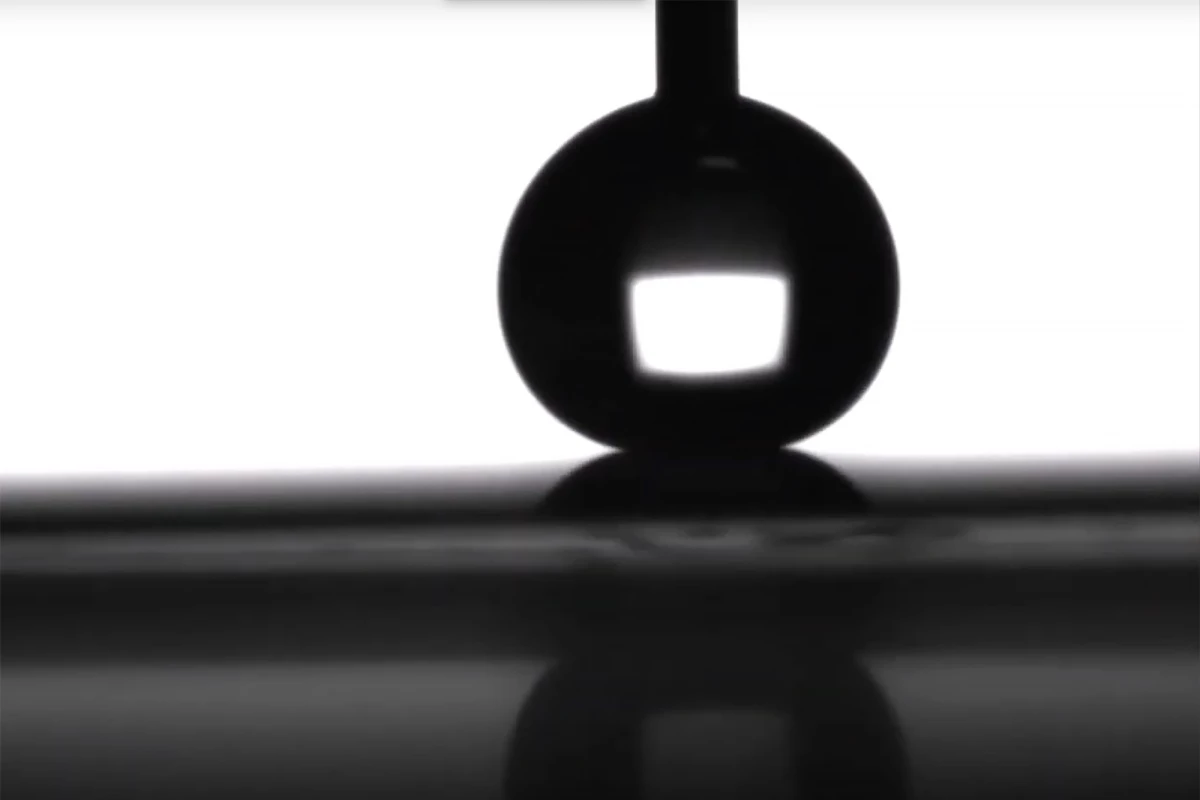Inspired by a water-dwelling spider, researchers have created a novel surface material that stays dry for months underwater, and also greatly resists adhesion by bacteria and marine organisms like barnacles. They say the surface is easy to produce, scalable, and has a wide range of practical applications.
It’s often the case that what works well in nature can also work well for humans. It’s a matter of using the tools you have to create the bioinspired material you need, which is sometimes easier said than done.
Now, researchers led by the Harvard John A. Paulson School of Engineering and Applied Sciences (SEAS) have done just that, taking inspiration from a water-dwelling spider to develop a metallic surface that is superhydrophobic; that is, it repels water, and can stay dry underwater for months.
“Research in bioinspired materials is an extremely exciting area that continues to bring into the realm of man-made materials elegant solutions evolved in nature, which allow us to introduce new materials with properties never seen before,” said Joanna Aizenberg, one of the study’s co-authors. “This research exemplifies how uncovering these principles can lead to developing surfaces that maintain superhydrophobicity underwater.”
The Argyroneta aquatica, otherwise known as the diving bell spider, is the only species of spider known to live almost entirely underwater. Millions of rough, water-repellant hairs trap air around its body, creating an oxygen reservoir and creating a barrier between the spider’s lungs and the water. The thin layer of air trapped by the spider’s hair is called a plastron.
For a couple of decades, researchers have known that a stable, underwater plastron was possible – in theory. However, in practice, creating a rough surface like that seen in the diving bell spider makes the surface mechanically weaker and susceptible to small changes in temperature and pressure. And in previous experiments, surfaces have only remained dry for hours.
The researchers knew that wetting is sensitive to surface properties at the molecular level and is strongly influenced by surface topography. So, they created an aerophilic titanium alloy surface – that is, one that attracts and sheds bubbles of air or gas – and produced a nanoscale roughness using electrochemical oxidation to form an oxide layer and simultaneous chemical dissolution of the formed oxide.
To test the stability of the surface, the researchers bent it, twisted it, blasted it with hot and cold water and abraded it with sand and steel; it remained aerophilic. It survived more than 208 days of continuous submersion in water (at the time of publication of the study, the plastron was still submerged and showing no signs of degradation), and hundreds of dunks into a Petri dish full of blood. The surface was able to greatly reduce the growth of E. coli bacteria and barnacles and prevented mussels from adhering altogether.
“We used a characterization method that had been suggested by theorists 20 years ago to prove that our surface is stable, which means that not only have we made a novel type of extremely repellent, extremely durable superhydrophobic surface, but we can also have a pathway of doing it again with a different material,” said Alexander Tesler, the study’s lead author.
The researchers say the surface has multiple applications. It could be used on biomedical devices to reduce infection post-operatively or to prevent corrosion in underwater pipelines and sensors. It could also be used with another bioinspired material developed by the SEAS team more than 10 years ago, known as the slippery liquid-infused porous surfaces technology, or SLIPS.
“The stability, simplicity, and scalability of this system make it valuable for real-world applications,” said Stefan Kolle, a co-author of the study. “With the characterization approach shown here, we demonstrate a simple toolkit that allows you to optimize your superhydrophobic surface to reach stability, which dramatically changes your application space.”
The study was published in the journal Nature Materials, and the two videos below, produced by SEAS, demonstrate how the novel surface repels water and blood.





